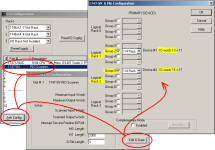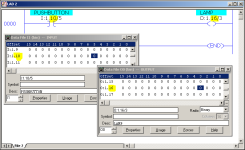I am given a problem that wants me to create the five- digit address code using the SLC 500 format. The problems I am given are:
1. A pushbutton connected to terminal 5 of module group 2 located on rack 1
2. A lamp connected to terminal 3 of module group 0 located on rack 2
For what I understand the codes should start as follows:
1. I: /5
2. O: /3
What I dont get is how to get the slot number from the module group and rack. This seems to me like more of a PLC-5 address, but they specifically say they want it in SLC 500.
1. A pushbutton connected to terminal 5 of module group 2 located on rack 1
2. A lamp connected to terminal 3 of module group 0 located on rack 2
For what I understand the codes should start as follows:
1. I: /5
2. O: /3
What I dont get is how to get the slot number from the module group and rack. This seems to me like more of a PLC-5 address, but they specifically say they want it in SLC 500.
Last edited:





